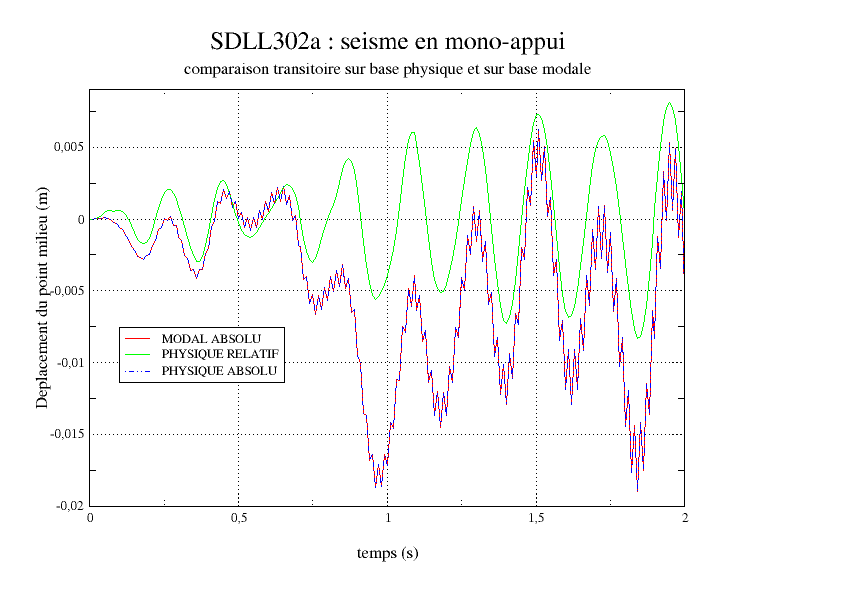3. Modeling A#
3.1. Characteristics of modeling#
We use a POU_D_T model.
3.2. Characteristics of the mesh#
The mesh contains 20 elements of type SEG2.
3.3. Tested sizes and results#
The first six natural frequencies of the embedded beam are tested:
We test the transverse displacement of the center of the beam in the direction of the earthquake at various times.
3.4. notes#
We can compare the evolution of the displacement of the center of the beam between the calculation on a physical basis and the calculation on a modal basis ().

Illustration 2: SDLL302a: transient comparison on a physical basis vs a modal basis, transverse displacement in the middle of the beam.
It can be seen that the absolute displacement calculated transiently on a physical basis or by transient on a modal basis are identical. On the other hand, it appears to be very irregular, especially in comparison with the relative displacement of the same point. This is an artifact due to the method used to integrate the accelerogram and determine the training displacement.
In the test case we used the method called SIMPSON while the method called TRAPEZE (value by default of the keyword INTEGRE of the command CALC_FONCTION [U4.32.04]) is recommended. It is verified that with this last method of integrating the signal, a much smoother evolution of the absolute displacement is obtained.